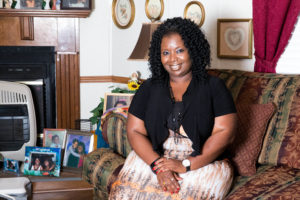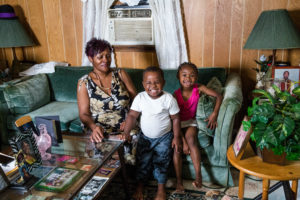For people to really understand the benefits of energy efficiency policies and programs, they need to see them working in real life. That’s why Resource Media traveled to South Carolina in July: to take a closer look at the highly successful Help My House program that delivers energy efficiency improvements to homeowners at little or no cost to themselves. South Carolina, like other southeastern states, faces some of the highest per capita energy prices in the nation, making the state ripe for smart energy efficiency investments that can help cut household energy bills.
We spent time learning about the innovative Help My House program from staff at the South Carolina Electric Cooperatives (SCEC). The program, operated by several of the state’s electrical cooperatives, uses “on-bill financing” to fund low-cost energy efficiency improvements by tacking the costs right onto the home’s electric bills. In most cases, the cost of the 10-year loans are completely covered by the reduced energy costs, resulting in no additional costs – or even a net savings – for participants.
So how to help make the program’s success feel “real?” Our goal was to find a slew of happy Help My House participants who could talk about the program’s benefits, show us their lower electric bills, and get photographed basking in their comfy air-conditioned homes. That would have allowed us to illustrate success, and hopefully persuade policymakers in other parts of the nation to take a closer look at on-bill financing models like Help My House.
But due to scheduling mix-ups and the difficulties of reaching the homeowners, we ended up with just one interview with a program participant. Just one. Clearly not the suite of success stories we’d hoped for, and we worried the trip would end up a failure. Still, we had a great time talking to Terese Patterson, whose home is now more energy efficient thanks to Help My House.

Terese Patterson’s home is now more energy efficient thanks to the Help My House program.
Then came Day Two. That’s when we started the interviews for the other side of the story: families who desperately need the kind of help that the Electric Cooperatives are offering to their members, but who have the misfortune of being served by traditional utilities that don’t offer on-bill financing for energy efficiency improvements. Their stories drive home, quite dramatically, the scope of need in places like Marion County, South Carolina. We heard about $500 electric bills faced by families whose aging window air conditioners barely served to beat back the summer heat. We visited homes so “leaky” that the expensively cooled air escapes as fast as the window units pump it out. We learned about the tough decisions faced by families struggling to balance high energy costs against other urgent expense – like food, and medicine.

Helene Gause, and her grandchildren, Ty Harper and Janiah Davis
For example, Helene Gause told us that despite the heat that left her grandchildren sweaty and cranky, she’d prioritize repairs to her leaking roof and floors over central air conditioning, no matter how efficient. The roof leaks when it rains, and she often fears that her grandchildren could fall through the floor. Helene recognizes that these structural issues also contribute to her high electricity bill, about $150 each month, but she does not have the financial means to pay for the necessary repairs – especially all at once.
We came away more determined than ever to tell success stories that might lead to more programs like Help My House. But we were also reminded that part of that story needs to showcase the deep need for the programs, not just the few hundreds of homes who’ve gotten Help My House retrofits.
From that standpoint, the trip was a rousing success. Read more about South Carolina’s challenges and opportunities in this Medium post from one of our key partners, the Reverend Leo Woodberry.
— Cat
